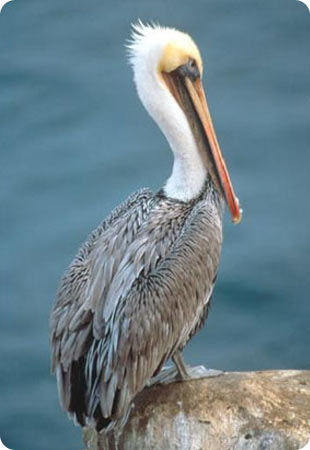For some pelicans, dinner is a communal affair -- a sit-down activity shared with friends. For others, though, it’s strictly grab-and-go -- an activity for one. Two species of pelican inhabit American coastlines: the brown pelican and the American white pelican. They’re different in more than just color, though. They have different nesting habits, for example, and white pelicans are generally a good bit larger than the brown ones.
 Bown pelicans dive toward their prey. Credit U.S. Fish and Wildlife Service
Bown pelicans dive toward their prey. Credit U.S. Fish and Wildlife ServiceOne other thing that sets them apart is their feeding habits.
For white pelicans, mealtime is often shared. The pelicans form a line, crescent, or even a circle atop the water. They may then beat their wings, beaks, and webbed feet on the water to “herd” the fish below -- either to shallower waters, or to the center of the circle. With the fish concentrated in a smaller volume, the pelicans dip their heads into the water and fill them with fish.
Brown pelicans, on the other hand, feed more like land-based birds of prey: They dive toward their targets from the air, plunging into the water head-first.
Both species fill the elastic pouches on their lower beaks with not just fish, but with water, too. They have to let the water drain away before swallowing the meal. It usually takes only a minute, but it can be a harrowing 60 seconds: gulls and other birds may swoop in and try to steal the fish from the pelican’s pouch, sometimes even perching on the pelican’s head while they snatch at a free meal. That’s a case where no pelican really wants the company.

